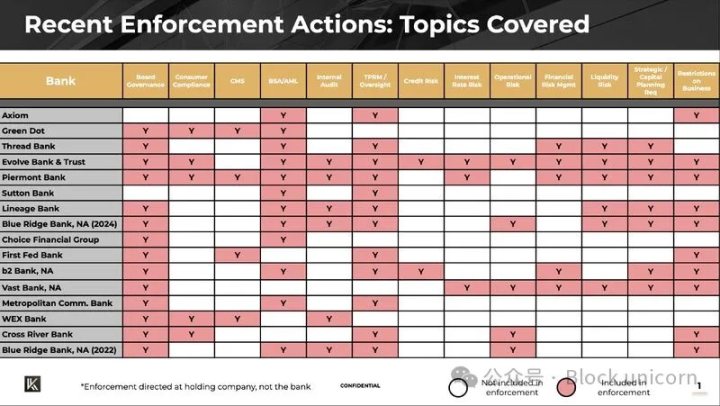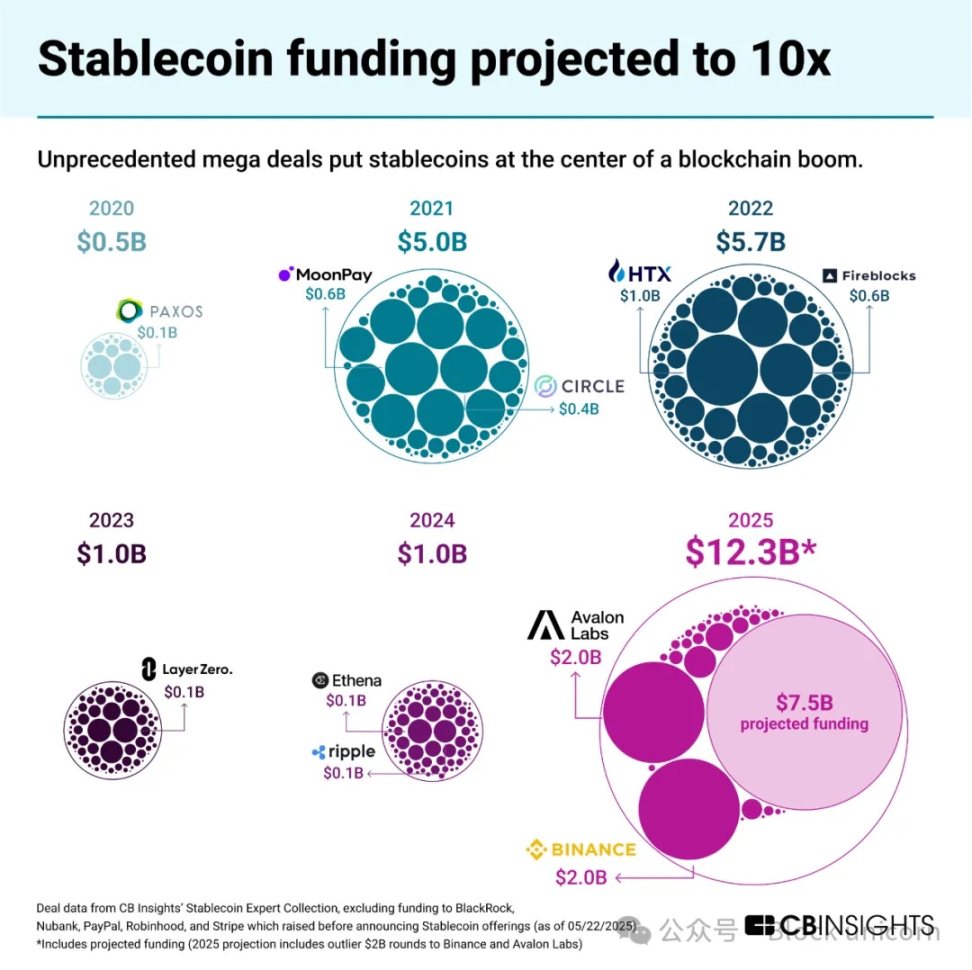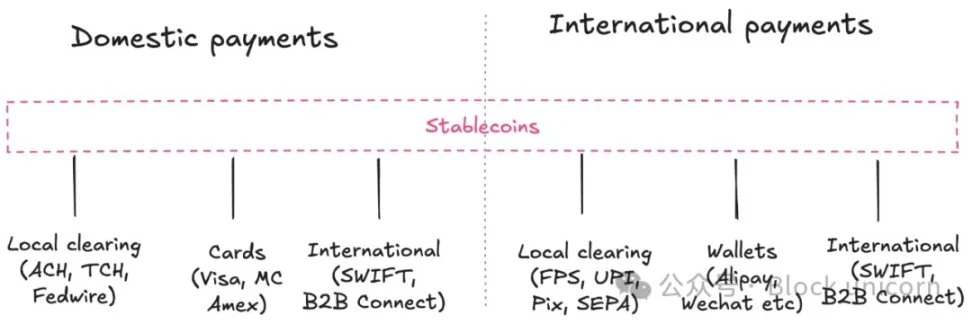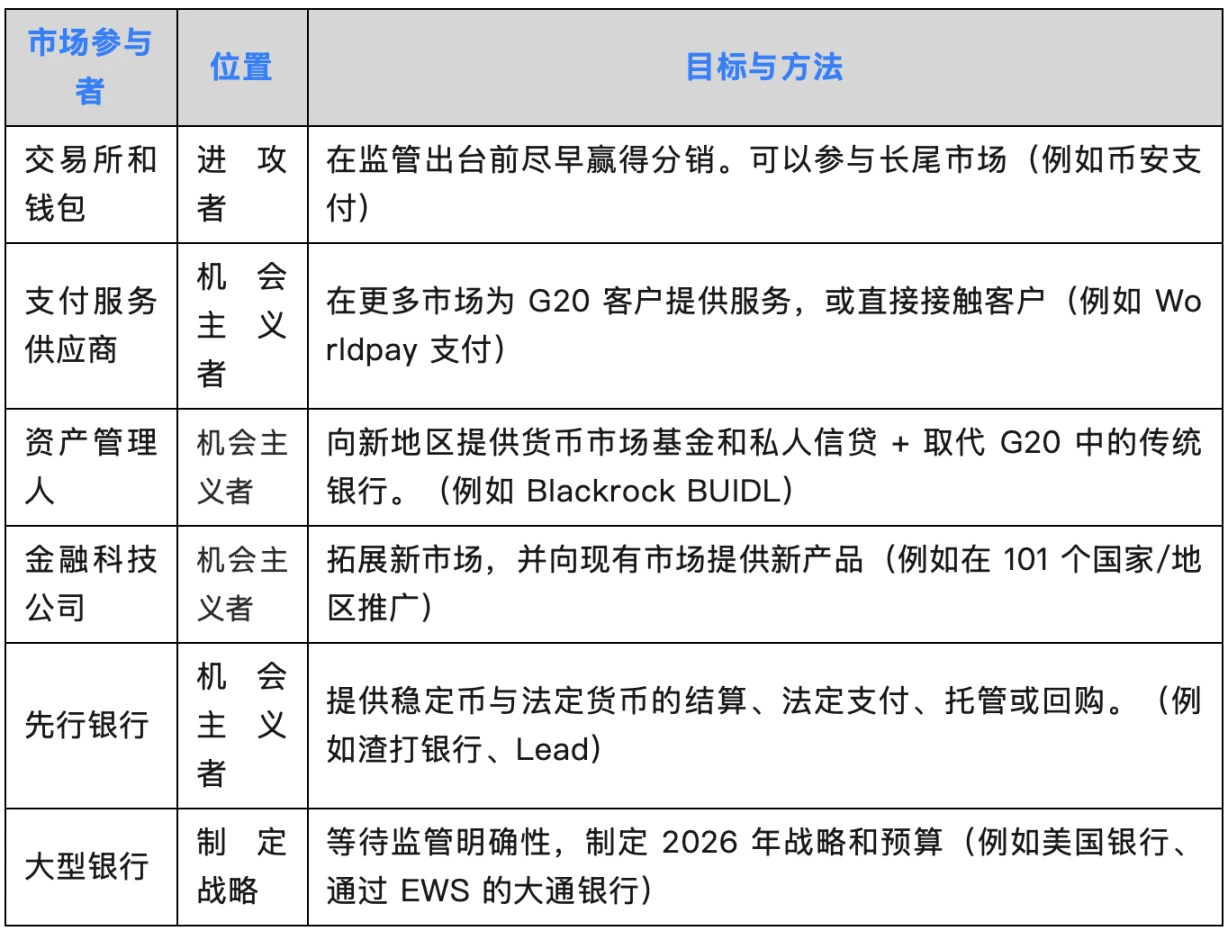The rise of stablecoins: a platform revolution from payment channels to financial infrastructure
Original author: Simon Taylor
原文翻譯:方塊獨角獸
前言
Every fintech company will become a stablecoin company.
Despite the hype, skepticism, hope, fear, and more that stablecoins have generated, I believe we have crossed an important watershed. From the era of Banking as a Service (BaaS), to the era of stablecoins as infrastructure. B2C, B2B, and infrastructure companies with stablecoins at their core will shape the industry in the next decade.
This shift will be ten times more dramatic than the fintech boom of the past decade.
Because we are moving towards a new infrastructure layer. People still see stablecoins as a new payment rail, and when they see it as a platform on top of all the other layers, we will eventually move completely to stablecoin native. Stablecoins are a platform.
關鍵點:
-
The Last Era: Banking as a Service (BaaS) and its Implications for Stablecoins
-
Why Stablecoins Are an Infrastructure Layer (Not Just a New Channel)
-
Stablecoin Gold Rush and Regulatory Unlock
-
Full stack application scenarios
-
Strategic positioning and future prospects
1. Lessons from BaaS to Stablecoins
As the saying goes, fools are always impulsive.
We just witnessed this in BaaS.
The financial services era of the 2010s was characterized by companies adopting mobile-first distribution and cloud-first infrastructure.
We are seeing a new generation of infrastructure providers purpose-built for financial services. Every department and IT system at a bank is now accessible via APIs. This includes customer onboarding, fraud prevention, anti-money laundering (AML), credit card services, and in some cases even customer service. This enables new companies to launch mobile apps, wallets, and “accounts” to acquire and serve customers at a fraction of the cost of incumbents.
By combining APIs, mobile and cloud technologies, fintechs also benefit from the help of a small number of sponsor banks that see an opportunity to provide banking channels, store funds and transfer funds to this new space. Some banks have been very successful because they are easy to work with.

Image source: Klaros Partners
For fintech companies, their initial business model is:
-
Earn income through card swipe fees (Interchange)
-
Reduce customer acquisition costs (CAC) through frictionless digital onboarding
It’s like the saying: show me the incentives and I’ll show you the results?
Some (but not all) fintechs optimize for conversion rates, and when you do that, many of the norms of financial services look like friction: asking customers to provide multiple pages of documentation for Know Your Customer (KYC) checks, for example, or monitoring transactions for international terrorism risks, when the vast majority of customers are domestic.
When I wrote “BaaS is Dead” in March 2023, we were already seeing the writing on the wall.
Account opening is a critical moment for both parties to catch criminals. If you view account opening as a checkbox process that must be completed with minimal friction, then a minimalist interpretation of the BSA/AML rules will result in a high-conversion opening process. Over the past two years, this has allowed fraud and money laundering to be carried out remotely on a large scale, attacking the weakest parts of the system. ———Excerpt from BaaS is Dead
If you are a bad guy, it is easy to attack small new banks and digital banks.
But the results were not good.
Tens of thousands of customers lost their life savings when blockchain-as-a-service (BaaS) provider Synapse went bankrupt on April 22, 2024. Fintech applications were unable to access the funds, and the underlying banks were unable to track or verify where the funds went.
The incident generated mainstream headlines and within the banking industry, regulators issued a series of consent orders finding that banks had fallen short in:
-
Third-party risk management (i.e. API providers and FinTech companies)
-
Anti-money laundering (i.e. controls across these firms may not be consistent)
-
Board governance (i.e., whether management is held accountable)

Image source: Klaros Partners
The consequences of these failures are enormous.
If you can’t stop the money from flowing to the bad guys, the criminals will get paid, thus funding human suffering.
However, the lesson here is not that BaaS or FinTech are bad; far from it.
Today we have:
-
The ability for immigrants and low-income people to open free accounts
-
The ability to use cash flow (the money you have) for loan approval, which means more people can avoid bankruptcy
-
Good consumer management card
-
Embedded lending for 市場s, SMEs and vertical SaaS
Large, successful financial brands have reshaped the industry. Cash App, Venmo, Chime, Affirm, Revolut, Monzo, Nubank, Stripe, Adyen, and your favorite brands have become household names in their markets and industries. Fintech has fundamentally changed the way finance is distributed and raised the bar for user experience.
We just learned some lessons along the way.
The scale of stablecoin investment and cross-border activity could mean that any collapse could have epic consequences.
While I know that it’s impossible to completely prevent bad things from happening, I hope that companies with stablecoins at their core can learn from the mistakes and successes of the BaaS era and not get carried away by the coming gold rush.
2. Regulatory unlocking and capital surge
2.1 Regulatory Unlock
The current draft of the GENIUS Act could change everything. According to the draft, if you are an approved stablecoin issuer, you can treat your stablecoin as a cash equivalent on your balance sheet. This is a significant thing.
Take prepaid cards, for example. They require money transmission licenses, repatriation rules, and consumer protection requirements. Cash is like the money in your pocket. It’s much simpler to hold and manage. Stablecoins could inherit that simplicity.
2.2 Stablecoin Gold Rush
Funding for stablecoin-related businesses is expected to grow 10-fold year-on-year.

Funding of stablecoin-related businesses
If the GENIUS Act passes, there would be a new, regulated stablecoin rail and a new narrow class of banks called licensed payment stablecoin issuers (PPSIs).
This means that every entrepreneur, venture capitalist, payment company, shadow bank, and even big bank will have to take action to defend or seize this new opportunity.
3. Thesis: Stablecoins as a platform
Today, stablecoins are used as alternative cross-border payment channels, and in the future, they may become domestic payment channels.
But if you only see these, you are missing the big picture. Stablecoins are also a platform that sits above channels like SWIFT, ACH, PIX and UPI, becoming the infrastructure that connects all of them. This will unlock new use cases and opportunities.
Ultimately, stablecoins will create an abstraction layer on top of existing payment channels, just as the internet did for telecom operators. Likewise, entire industries will become “stablecoinized,” as we’ve seen with video, messaging, and e-commerce. This network layer will ultimately eliminate middlemen and reduce costs. ———Excerpt from “Stablecoins are not cheaper; they’re better”
I envision it as follows:

Stablecoins as a platform
This is what platform disruption looks like. Telecom traffic is growing 60% year-over-year, and revenue is growing 1% year-over-year. In 15 years, traffic growth has outpaced revenue growth by more than 1,000 times.

Incumbents that fail to adapt to the new platform layer will become commoditized.
Stablecoins are to payments what the internet was to telecommunications — creating a platform layer that makes the underlying infrastructure a commoditized plumbing.
We can see this infrastructure layer emerging in every payment process and business model. Here’s how it works.
4. How do stablecoins play a role in the overall system?
Yes, stablecoins operate as alternative payment channels today. But that’s just the basics. Most people think of them as payment channels as in the image below, not as a platform:

Stablecoins as payment rails — they are all that and more.
The real opportunity lies in what they can do as infrastructure.
4.1 Stablecoins for international payments – starting point
Without a doubt, the main use case for stablecoins is cross-border payments. The main currency routes are Asian countries, followed by the United States to Latin American countries (Mexico, Brazil, Argentina).

G20 Leads Payments to Global South via Tron and Tether
There are many types of cross-border payments. Let’s take a closer look at each payment process.
B2B Early Adoption Use Cases:
-
Scale-ups expanding into new markets (e.g., SpaceX): for financial management, supplier payments, and inter-company payments.
-
International payroll and payments (e.g., Deel, Remote): Contractors and employer representatives will be paid into stablecoin wallets.
Artemis surveyed more than 30 companies working in the stablecoin business and found that B2B as a category has grown 400% year-over-year (and accelerating), making it the fastest growing category. (Note: The transaction volume shown in the figure below is only a portion of the overall market)

As the growth curve shows, this is significant growth.
Currently, last-mile liquidity and FX spreads are bottlenecks, but new companies like Stablesea, OpenFX, and Velocity are entering the market to change this.
Cross-border stablecoin use cases for consumers include:
-
Remittances and P2P (e.g., Sling Money): Customers use stablecoins to send money across borders faster and often at a lower cost.
-
Stablecoin-linked cards: Also known as “dollar cards,” these allow consumers in southern hemisphere countries to purchase services from Netflix, ChatGPT, or Amazon.
Artemis’ survey also showed that P2P and stablecoin-linked cards grew by more than 100% year-over-year, with at least $1 billion in transaction processing volume (TPV) in their sample.
Stablecoins are becoming a feature of neobanks such as Revolut and Nubank, and while their current use cases are still narrow, they may expand in the future. Apps like Revolut, which originally started out in remittances and P2P, are uniquely positioned to take advantage of this new channel.
Currently, FX spreads are often higher and liquidity is lower for local currency transactions. But this is changing.
The domestic payments landscape is still emerging, but it is fascinating.
4.2 Stablecoins for domestic payments (future direction)
Domestic B2B use cases include:
-
24/7 yielding stablecoins (e.g. ONDO or BUIDL): Currently, 加密貨幣-native treasuries convert stablecoins into tokenized treasuries to avoid converting to fiat currencies. If this 24/7 functionality could be implemented in an ERP system, it could be very attractive to any corporate treasurer.
-
Stablecoins as an alternative to FBO structures (e.g. Modern Treasury): A feature of U.S. regulation is that as a non-bank institution, to transfer funds on behalf of a client, a “for beneficiary account” (FBO) structure is usually required. These accounts are complex to set up. Modern Treasury’s stablecoin product allows finance teams to set up payment processes for clients without the need for an FBO structure.
-
Stablecoin native B2B accounts (e.g. Altitude): “Borderless accounts” offered by Wise or Airwallex can be stablecoin native. These accounts use USD as the primary currency but provide an operational front end to manage invoices, expenses, and finances.
Domestic consumer use cases are still in the early stages and include:
-
Stablecoin-native “checking” accounts (e.g. Fuse): A consumer experience similar to Wise, Revolut, or a remittance app, but global by default. These services are currently available in countries in the Global South, but could be a new, low-cost model for consumer fintech projects.
-
Prepaid card projects: Because stablecoins have the potential to be cash equivalent, treasurers can gain access to programmable money that is recorded on balance sheets like cash but flows like digital payments without having to manage complex prepaid liability issues.
-
P2P stablecoins: Zelle, Venmo, Pix, and Faster Payments dominate their domestic markets, but if stablecoins become an alternative model, these applications may only need to serve as a front end to support it.
4.3 Finance and Infrastructure (Hidden Layer)
The hidden layer is infrastructure. Banking technology itself is becoming the native technology for stablecoins.
-
Stablecoin issuance as a service (e.g. Brale, M^0): Banks and non-bank institutions may want to create their own stablecoins to attract deposits or avoid fees charged by other issuers.
-
Stablecoins as side cores (e.g. Stablecore): Banks may want to create a system of record that interacts with stablecoins, independent of their traditional platforms. A “side core” can achieve this, but still reconcile with the main core.
-
Stablecoins provide a BaaS-like infrastructure (such as Squads Grid): providing developers with a simple API to quickly create consumer, B2B or embedded financial products.
Most companies in the market have seriously underestimated how much developers will love the convenience of stablecoins. For companies like Stripe, convenience has always been the secret to success.
You can imagine other possibilities. As a thought experiment, think of a stablecoin as a global, programmable system of record that everyone can reconcile and view.
Each wallet address can be assigned to a known front-end or wallet creator, allowing these companies to collaborate instantly if KYC or AML issues arise.
4.4 Strategic Positioning of Stablecoins
The current market has attackers, opportunists, and players who are still watching and formulating strategies.
Currently, the vast majority of activity is happening on new platforms like crypto exchanges and wallets, but the opportunists are some of the companies that are now positioning themselves to leverage stablecoins as new payment rails:

Here are my thoughts on which is which:
Attacker:
-
Asset managers: BlackRock, Franklin Templeton, and Fidelity, among others, rely on banks to settle wire transfers. They have taken market share from banks in credit and money market funds since the financial crisis. Stablecoins connect it all with an instant, 24/7 settlement layer.
-
Payment companies, such as Stripe, WorldPay and Dlocal, are expanding the number of markets they can operate in and the types of payment processes they offer. “Financial accounts” erode the core business of large money center banks, but often target newer customer segments.
Defender:
-
Big Banks: JPMorgan, Bank of America, Citigroup, and other US banks have discussed launching their own stablecoins early on. I think this may be an attempt to grab market share in this new domestic and cross-border payments “channel”, and just as banks dominate P2P payments through Zelle, they may “inevitably” dominate this new channel as well.
-
Small banks: have begun lobbying against stablecoins. Small banks stand to lose the most from stablecoin issuers, asset managers and large banks that could siphon deposits from their lower-yielding checking accounts.
There will be a group of opportunistic banks that, like we have seen with sponsor banking, will see huge opportunities through stablecoin disruption.
The reality is that opportunities vary by use case. 新創公司 are exploring new payment processes, while payment service providers (PSPs) are expanding market access through existing processes. In the future, asset managers and banks will find their niche in the market, perhaps closer to their existing core businesses.
5. Criticisms, Concerns, and Why Most Are Exaggerated
I would summarize the criticism as follows:
Criticism: Stablecoins will trigger bank run scenarios. Rebuttal: This assumes Terra-style algorithmic stablecoins, not Treasury-backed licensed payment stablecoin issuers (PPSIs) under the GENIUS Act.
Criticism: Big Techs will form a monetary oligarchy. Counterargument: This is a legitimate concern, but the framework makes it unlikely that Big Techs will issue stablecoins directly – they will use stablecoins, not issue them. Becoming a PPSI is a high regulatory barrier for them.
Criticism: Will cause community banks to lose deposits. Counterargument: Money market funds are already causing this. Community banks that adapt to providing stablecoin services will thrive.
Criticism: Its crypto, which means its full of crime and scams. Counterargument: Its time to abandon this view. The future of finance is on-chain, and institutional capital is building the infrastructure. There are real, novel risks, such as key management, custody, liquidity, integration and credit risks, which should be paid attention to.
Criticism: Stablecoins are just regulatory arbitrage because holding USDC should be as difficult as holding USD. Rebuttal: Fintech itself has achieved regulatory arbitrage through the Durbin Amendment. It is easier to develop on stablecoins, but there is also a full licensing system.
I believe this debate will continue.
Stablecoins will drive the next era of finance, and our vision for the future has only just begun.
6. Finally, why every company needs a stablecoin strategy
Everything we do today can be made native to stablecoins, and finance will gain superpowers. We can build instant, global, 24/7 finance. We can reassemble financial Lego blocks and make them more developer-friendly.
The BaaS era taught us that new infrastructure creates both huge opportunities and huge risks. Companies that learn from the successes and failures of that era will win in the era where stablecoins are at the core.
Every company needs a stablecoin strategy. Every fintech, every bank, every finance team. Because this is more than just a new payment rail. It’s the platform layer that everything else will be built on top of.
I implore each reader to build upon the lessons of the past.
Crashes are inevitable, things are going to go wrong, that’s for sure.
This includes how you will protect yourself when things inevitably fall apart.
Build cool stuff.
And stay safe.
This article is sourced from the internet: The rise of stablecoins: a platform revolution from payment channels to financial infrastructure
Related: YugaLabs lets go of CryptoPunks, will the next stop for NFT blue chips be the museum?
Written by ChandlerZ, Foresight News In May 2025, CryptoPunks was sent to the museum. To be precise, Yuga Labs transferred the intellectual property rights of this project that pioneered the NFT art era to a non-profit organization called Infinite Node Foundation (NODE). The latter announced that the acquisition not only includes all the intellectual property rights of CryptoPunks, but also comes with a $25 million cultural fund and will promote an ambitious museum cooperation plan dedicated to bringing CryptoPunks into mainstream art institutions around the world. It also loudly declared: This is not a transfer of ownership, but liberation. Within a few hours after the announcement, the floor price of CryptoPunks quickly rebounded to about 48 ETH, and the trading volume also increased significantly. The once silent trading interface became…







